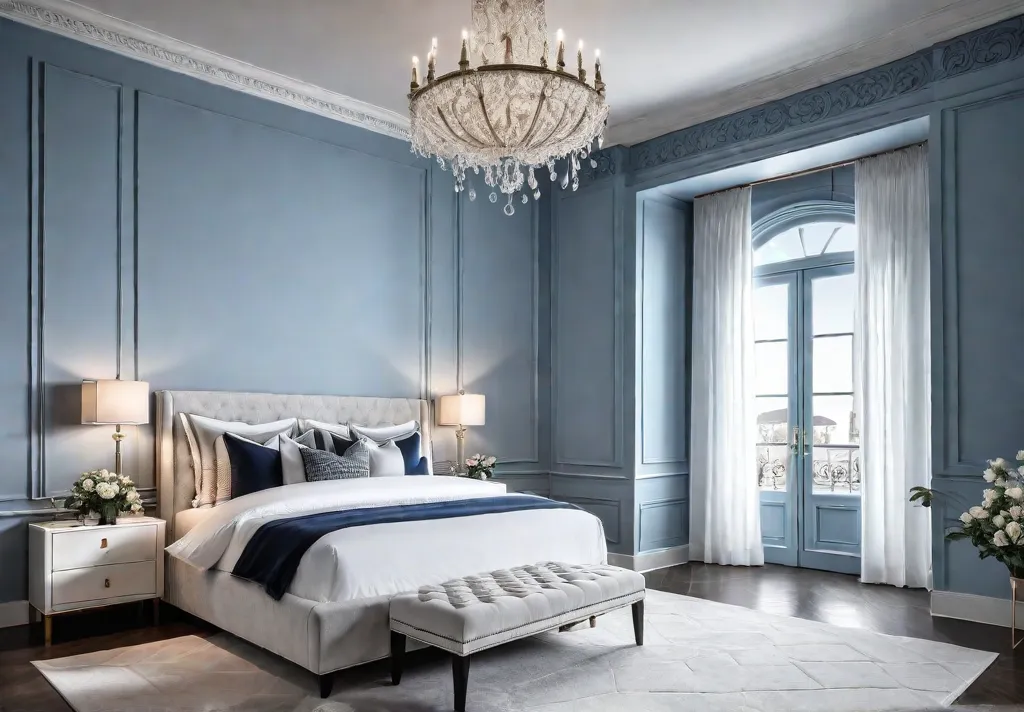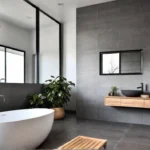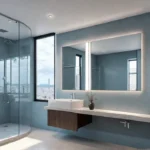Are you tired of tossing and turning all night, struggling to get the restful sleep you crave? The secret to a good night’s sleep may be hiding in your bedroom walls. That’s right – the colors and patterns of your bedroom wallpaper can surprisingly impact your sleep quality and overall well-being.
As a full-time travel and home decor influencer, I’ve seen firsthand how the right wallpaper can transform a space. But it’s not just about creating a visually stunning bedroom – the psychology behind color and pattern can work wonders for your sleep.
Imagine sinking into a plush, cozy bed surrounded by soothing hues and calming motifs that instantly put your mind at ease. Sounds heavenly. That’s the power of strategic wallpaper selection.
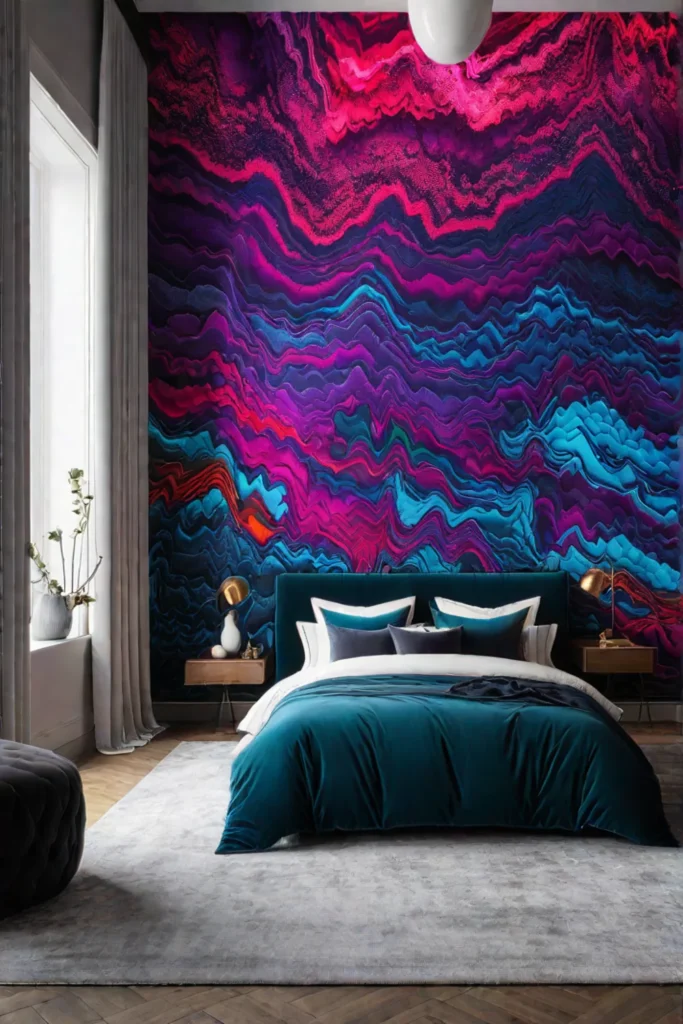
In this comprehensive guide, we’ll explore the fascinating world of bedroom wallpaper and uncover how it can affect sleep patterns, mood, and overall health. Get ready to bid farewell to restless nights and hello to blissful slumber!
The Psychology of Color in Bedroom Wallpaper
Color is a powerful tool in interior design and is no different for your bedroom. The hues you choose for your wallpaper can profoundly impact your sleep quality and overall mood.
It all comes down to color psychology. Warm colors like red, orange, and yellow are more stimulating, while cool colors like blue, green, and purple are calming. Imagine trying to drift off to sleep in a room painted bright red – it’s likely to keep your brain buzzing rather than lulling you into a peaceful slumber.
On the other hand, studies show that blue and green tones can promote better sleep. These soothing shades mimic the calming effects of nature, helping to lower your heart rate and blood pressure.
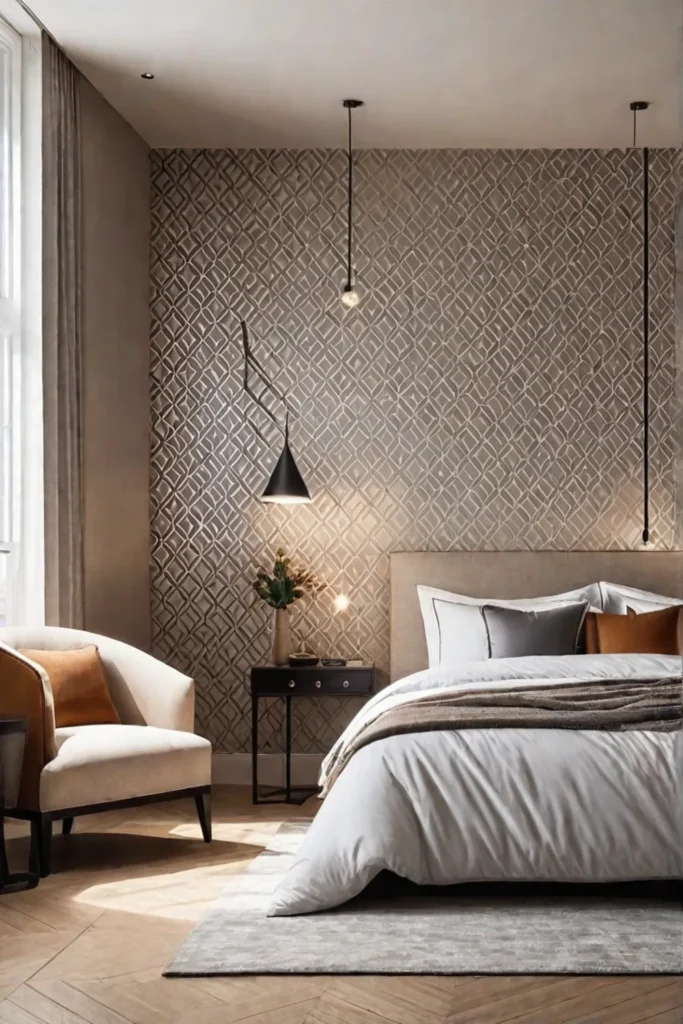
Aim for a color palette that encourages relaxation when selecting your bedroom wallpaper. A soft, muted blue or a serene green can create a tranquil oasis that your mind and body will thank you for. Don’t be afraid to mix in some neutral tones like beige or gray—they can provide a calming backdrop for your accent colors.
Remember, it’s all about finding the right balance. A bit of a bolder hue can add depth and personality to your space, but be cautious of going overboard with stimulating shades. The key is creating a sleep-friendly environment that reflects your style.
The Influence of Wallpaper Patterns on Sleep
Patterns can be just as impactful as color in your sleep environment. The complexity, scale, and repetition of your bedroom wallpaper can all affect how well you rest.
Busy, intricate patterns can be overstimulating, making it harder for your brain to wind down and drift off. Imagine trying to relax in a room covered in a busy, geometric print – it’s likely to keep your eyes darting around, unable to find a calm focal point.
Conversely, simple, soothing patterns can have a wonderfully calming effect. Think soft, muted florals or subtle, geometric designs. These patterns create a sense of rhythm and familiarity, which can help your mind and body relax.
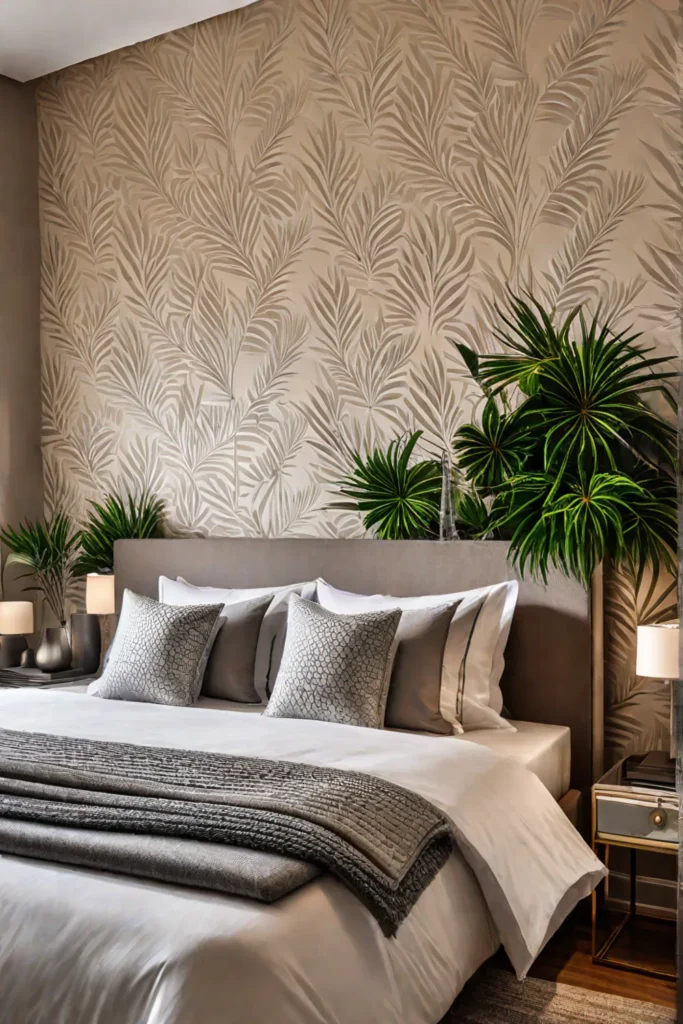
Regarding scale, larger patterns tend to be less disruptive than smaller, more detailed ones. The reason? Smaller patterns require more cognitive processing, which can be stimulating rather than soothing.
So, as you browse wallpaper options, keep these pattern principles in mind. Opt for calming, repetitive designs, and steer clear of anything too busy or chaotic. By creating a visually harmonious environment, you’ll be well on your way to better sleep.
The Interplay of Color and Pattern in Bedroom Wallpaper
Now that we’ve explored the individual impact of color and pattern let’s dive into how they work together to create a sleep-promoting environment.
The interplay of these two design elements is key. Striking the right balance between color and pattern can make all the difference in your sleep quality.
For example, a soft blue color paired with a subtle geometric pattern can create a calming, cohesive look conducive to rest. The cool tones of the blue have a soothing effect, while the simple pattern adds visual interest without being overpowering.
On the other hand, a bold, red-and-orange color scheme combined with a busy, floral print could be overstimulating and disruptive to your sleep. The warm, energetic hues paired with the intricate pattern can keep your brain buzzing, making it hard to wind down.
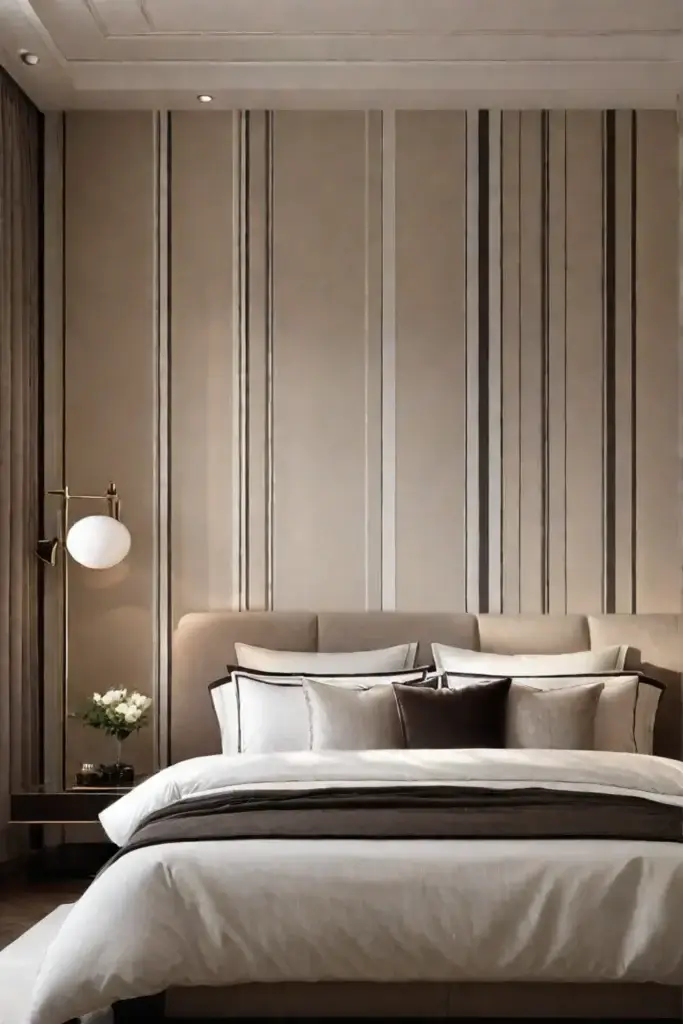
It’s all about finding that sweet spot where color and pattern harmonize harmoniously. Consider using a neutral base, then introducing calming accent colors and simple patterns to create a visually appealing, sleep-friendly space.
Remember, the goal is to craft an aesthetically pleasing bedroom conducive to quality rest. By mastering the interplay of color and pattern, you’ll be well on your way to creating a sanctuary that supports your overall well-being.
Personalization and Sleep-Friendly Wallpaper Choices
As an avid home decor enthusiast, I know that personalization is key to creating a space that truly feels like your own. And when it comes to your bedroom, that personal touch can profoundly impact your sleep quality.
Your preferences, cultural background, and even personal associations often influence your wallpaper choices. These factors can significantly affect how you perceive and respond to different design elements.
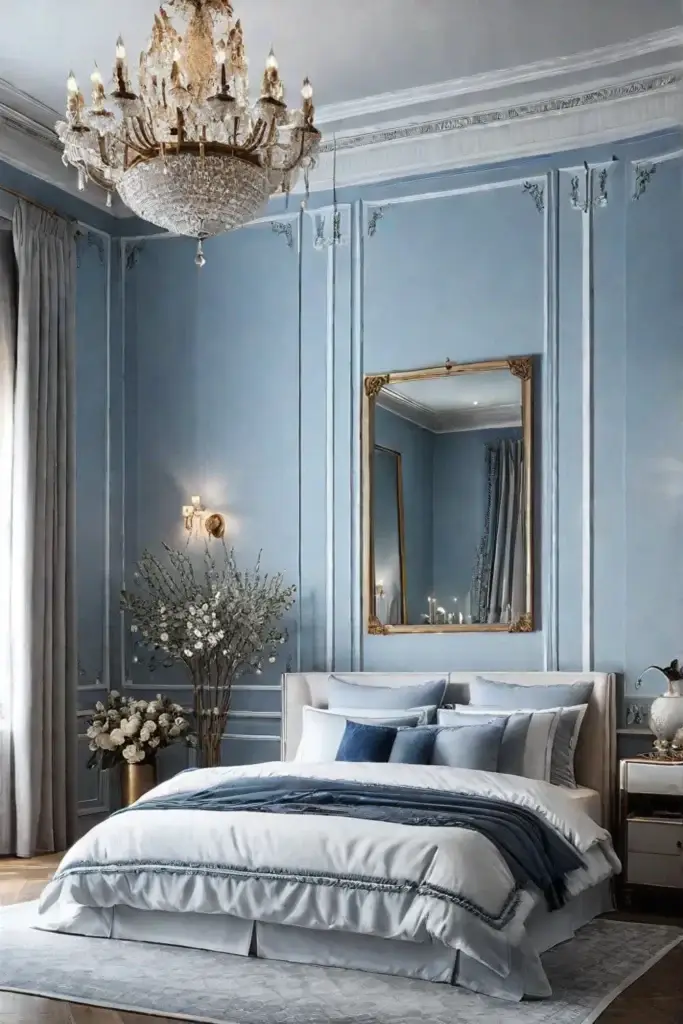
For example, if you have a deep connection to the color blue, perhaps from fond memories of your childhood bedroom, incorporating that soothing hue into your wallpaper can create a sense of familiarity and comfort. This personal connection can help you feel more relaxed and at ease, leading to better sleep.
On the flip side, cultural influences can also shape our wallpaper preferences. Certain colors or patterns in some cultures are believed to bring good luck or ward off negative energy. Incorporating these meaningful elements into your bedroom can help you feel more grounded and centered, positively impacting your sleep.
Now, I know what you’re thinking – “But Lauren, how do I balance my personal preferences with the principles of sleep-friendly design?” It’s a great question; the answer lies in finding perfect harmony.
While it’s important to honor your style and cultural influences, it’s also crucial to consider the overall impact of your wallpaper choices on your sleep environment. Opt for calming, muted tones and simple patterns that reflect your unique aesthetic. This way, you can create a space that’s both visually appealing and conducive to quality rest.
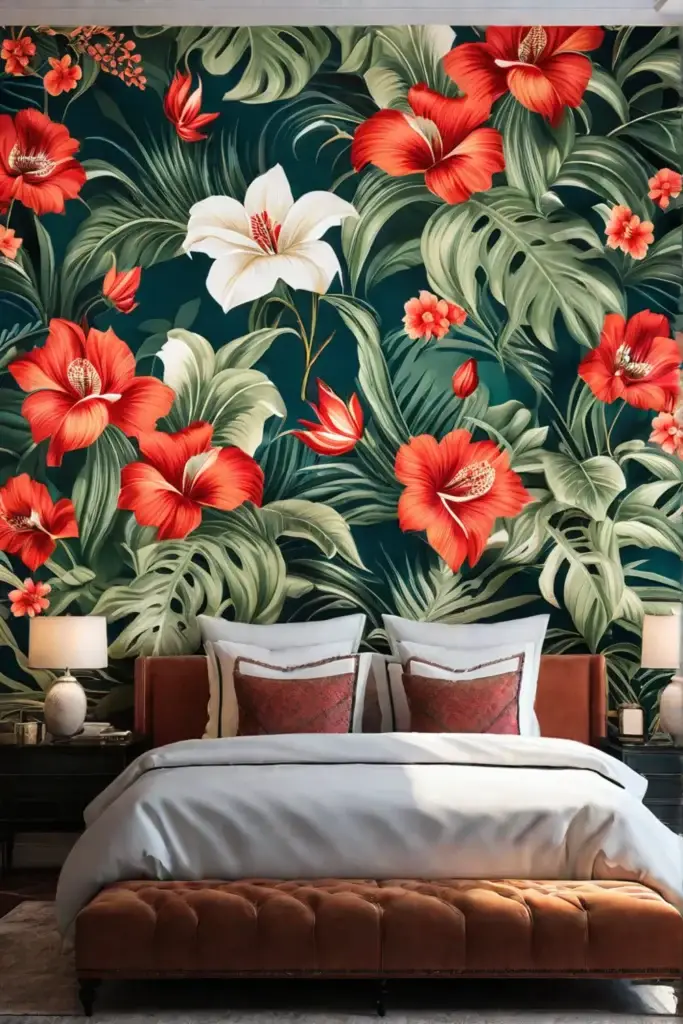
Remember, your bedroom should be a sanctuary where you can truly unwind and recharge. By infusing your personal touch into your wallpaper selection, you’ll be well on your way to crafting a sleep-promoting oasis tailored just for you.
The Role of Lighting and Texture in Bedroom Wallpaper
As we delve deeper into bedroom wallpaper, it’s important to consider the impact of two often-overlooked elements: lighting and texture.
Lighting can profoundly affect how we perceive our wallpaper. Natural light, with its soft, diffused glow, can create a tranquil, serene atmosphere—perfect for promoting relaxation and sleep. On the other hand, harsh artificial lighting can make even the most calming wallpaper feel stark and overstimulating.
The texture of your wallpaper can also affect your sleep environment. Soft, plush textures can add a cozy, inviting element to your space, while rougher surfaces may feel less comfortable and soothing.

Consider pairing your wallpaper choices with the right lighting and texture to create a harmonious, sleep-friendly bedroom. For example, a matte, subtly textured wallpaper in a soothing blue hue can work beautifully with gentle, natural lighting to create a calming oasis.
Conversely, a glossy, geometric wallpaper might feel more energized when paired with bright overhead lighting. This combination could be better suited for a home office or living room, where you want to feel alert and focused rather than lulled to sleep.
By mindfully considering the interplay of lighting, texture, color, and pattern, you can craft a bedroom that looks stunning and promotes quality rest. It’s all about finding the perfect balance to create your sleep sanctuary.
Wallpaper and Sleep Hygiene
As we’ve explored, the colors, patterns, and design elements of your bedroom wallpaper can significantly impact your sleep quality. But there’s another important factor to consider: sleep hygiene.
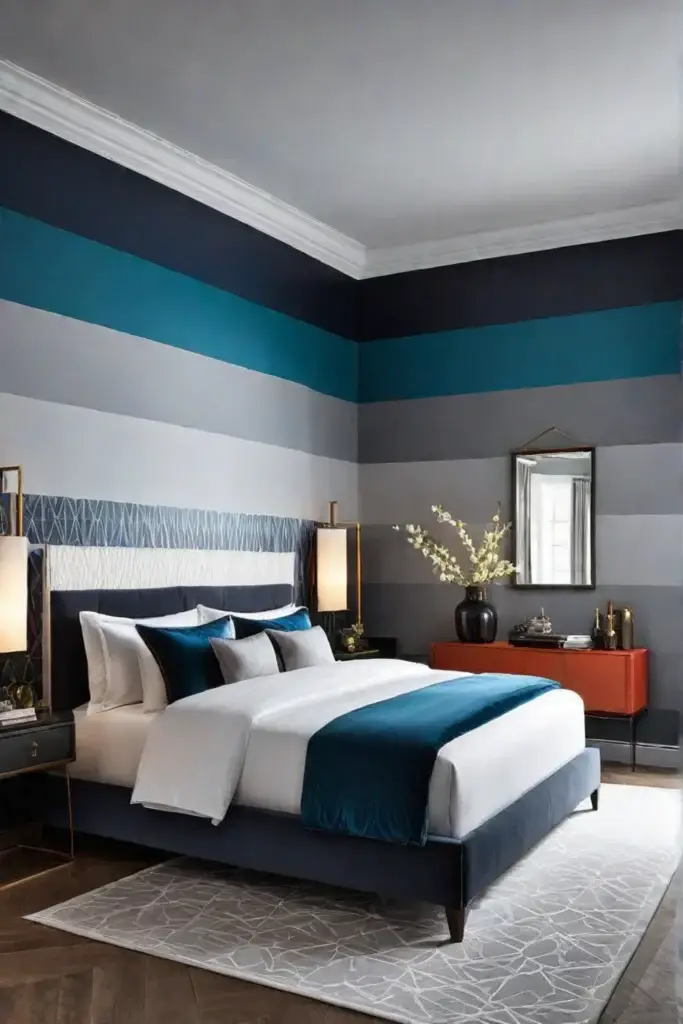
Sleep hygiene refers to the habits and practices that promote good sleep; your choice of wallpaper can play a role in this. Factors like cleanliness, maintenance, and indoor air quality can all influence the quality of your sleep environment.
For example, choosing wallpaper materials that are easy to clean and maintain can help reduce the buildup of dust and allergens. These irritants can negatively impact indoor air quality and contribute to respiratory issues, disrupting sleep and overall health.
Additionally, some wallpaper materials and finishes can off-gas volatile organic compounds (VOCs), affecting indoor air quality and potentially causing health problems. You can create a healthier, sleep-promoting environment by opting for VOC-free, eco-friendly wallpaper options.
But it’s not just about the wallpaper itself – your bedroom’s overall design and cleanliness can also impact your sleep hygiene. Incorporating soft, muted colors and patterns can create a calming atmosphere while ensuring your space is clutter-free and well-ventilated, contributing to a more restful environment.
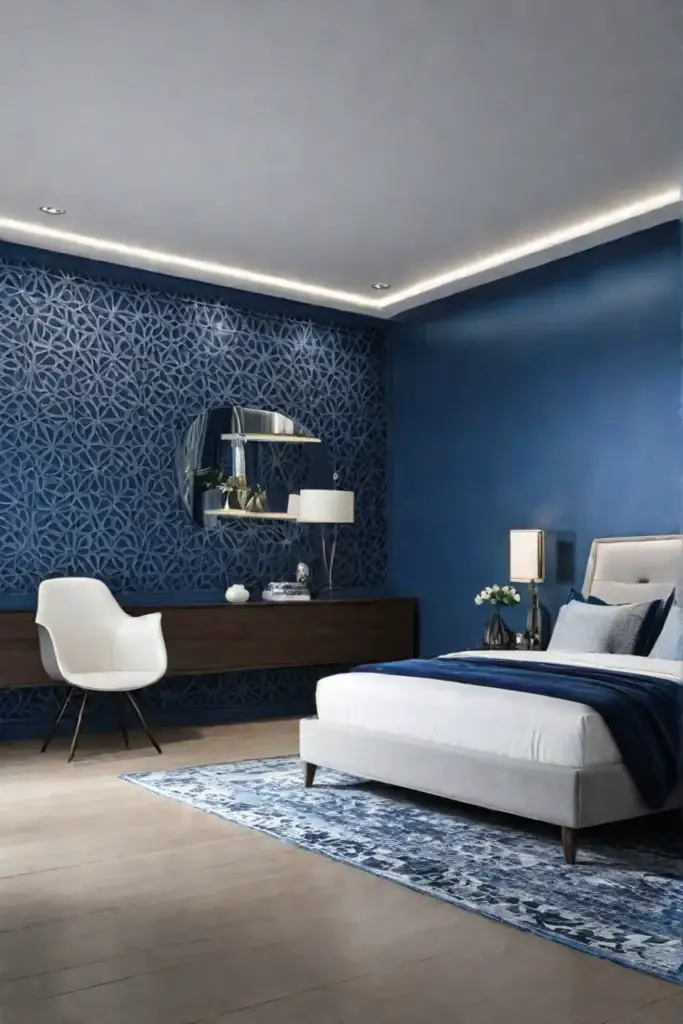
Remember, your bedroom should be a sanctuary where you can truly unwind and recharge. By considering the sleep hygiene factors in your wallpaper selection and overall bedroom design, you’ll be well on your way to creating a space that supports your health and well-being.
The Evolving Trends in Bedroom Wallpaper
As an avid home decor enthusiast, I’m always watching the latest trends in bedroom wallpaper. And let me tell you, the industry is constantly evolving, with exciting new developments that can significantly impact your sleep quality and overall well-being.
One of the most notable trends is the growing focus on sustainability. Many wallpaper manufacturers now use eco-friendly materials like recycled paper or natural fibers like bamboo and hemp. These options are better for the environment and can contribute to healthier indoor air quality, which is essential for quality sleep.
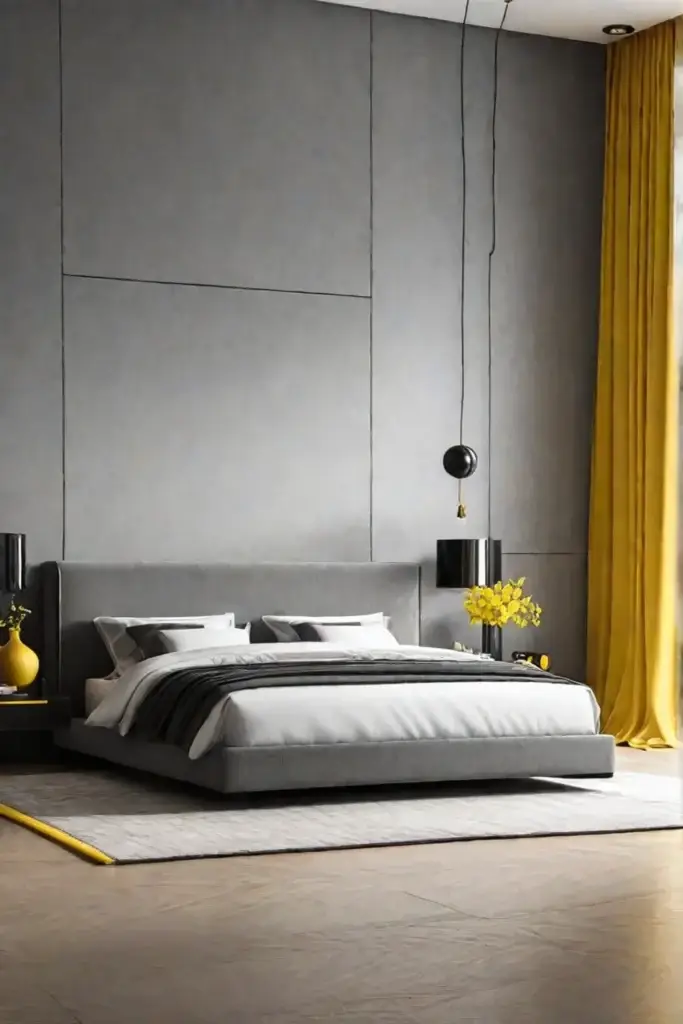
Another trend that’s gaining traction is the integration of technology into bedroom wallpaper. Imagine a wallpaper that can change color or emit soothing light to help regulate your body’s natural sleep-wake cycle. These innovative designs can create a personalized, sleep-promoting environment that adapts to your needs.
Cultural shifts are also influencing the world of bedroom wallpaper. For instance, there’s been a growing demand for minimalist, neutral color palettes that create a serene, calming atmosphere. This trend reflects a broader shift towards mindfulness and intentionality in interior design, which can positively impact sleep and overall well-being.
But it’s not just about the wallpaper itself – how it’s integrated with other design elements is also evolving. Homeowners are increasingly pairing their wallpaper choices with complementary furniture, lighting, and textiles to create a cohesive, sleep-friendly bedroom environment.

As you explore the ever-changing landscape of bedroom wallpaper, watch for these exciting trends. By staying informed and incorporating the latest advancements into your space, you’ll be able to create a sleep sanctuary that looks stunning and supports your overall health and well-being.
Conclusion
In conclusion, the psychology of bedroom wallpaper is a fascinating and often overlooked aspect of interior design. From the impact of color and pattern to the role of lighting and texture, the choices we make for our bedroom walls can profoundly affect our sleep quality and overall well-being.
By understanding the principles of sleep-friendly design, you can create a sanctuary that reflects your style and promotes the restful slumber you deserve. Whether you’re drawn to soothing blues, calming patterns, or the latest sustainable trends, the key is to find the perfect balance that speaks to your unique preferences and supports your health.

So, what are you waiting for? It’s time to dive into the world of bedroom wallpaper and unlock the secrets to a better night’s sleep. Sweet dreams, my fellow decor enthusiasts!
